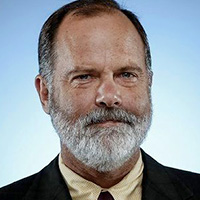HATE IS ON THE RISE IN AMERICA: 2021 saw more than 10,000 hateful acts of violence across the United States, the most ever recorded in this nation. And no wonder. Political leaders routinely descend to rhetoric once considered out of bounds for normal discourse; anti-immigrant sentiment veers into threats of harm; television personalities spout “replacement” theory, echoing the words and sentiments of white nationalists. Racism is flourishing, often behind the veil of discussions around immigration or public health.
Much has been written about the shattering of norms in recent years, but none has so infected the nation as the rise of hatred. It shrouds other debates in fear and undergirds the deepening problem of polarization. As author Curtis White recently wrote: “Each side casts the other in frighteningly reductive terms. Democrats are socialist baby killers, and the Republican base is stupid, violent, and bigoted.” With terms so drawn — and all sides emboldened by hatred — there seems little remaining room for conversation, much less compromise.
It feels new in its intensity, but in fact, hatred is stubbornly historical. Racism, religious bigotry and violent nationalism are among history’s most enduring and terrifying phenomena, periodically rising to engulf communities, nations and, occasionally, the world.
What, then, to make of hatred? Is it the work of groups or brain chemistry? Why does it seem so suddenly emergent? Those are among questions that a host of researchers at UCLA and elsewhere are exploring as part of a broad effort to better understand the place of hatred in society. Funded by a $3 million gift from an anonymous donor, the project, called the Initiative to Study Hate, is ambitious in its scope and addressed to a set of problems that leave many Americans unsettled. It is tackling questions of hatred from many angles — psychological, sociological, historical and others — and it already comprehends nearly two dozen discrete research studies.
David Myers, a distinguished professor of history and director of the Luskin Center for History and Policy, launched the idea and secured the funding. He sees the presence of hatred in the present and across generations, in organizations and deep in the psychology of individuals. And it takes different forms: crime and violence, of course, but also discrimination, stereotyping and bias. It lurks beneath homophobia and cultural arrogance, and it expresses itself in political speeches, comedy and torchlit marches.
“Hate is so pervasive in our world that it almost seems too daunting to take up,” Myers said in announcing the undertaking. “This new initiative aims to understand how and why hate functions as it does.”
The Initiative to Study Hate is an attempt to bring scholars together around these questions, to pool and exchange ideas in the hope that they will generate more ideas and, perhaps, lead to better ways of addressing the issue. That work will unfold over the next three years.
Meanwhile, hatred will continue, as will its destructive effects. Nowhere is that more tragic than in one of the projects examined in this issue of Blueprint. Jocelyn Meza, an assistant professor of psychiatry and biobehavioral sciences at UCLA, is researching the implications of racial bias in the study of suicide. Neglect in this area is long-standing, with one consequence being that suicides by young children of color are often mislabeled. A drug overdose by a White child may be seen as the culmination of emotional turmoil, while one by a Black child may be logged as an accident. The ramifications of such bias are withering: They highlight the potential for vastly underestimating the stress on young people of color.
And consider this: The stress those children feel might itself be the result of hatred directed toward them. Hatred, in the form of bias, begets hatred, in the form of neglect. And, in the end, a child dies.
It is difficult to imagine matters of graver concern or broader reach. Hatred undermines policy in government offices from Los Angeles to Washington. And it visits the devastated parent, lonely in grief. This demands our attention.
























